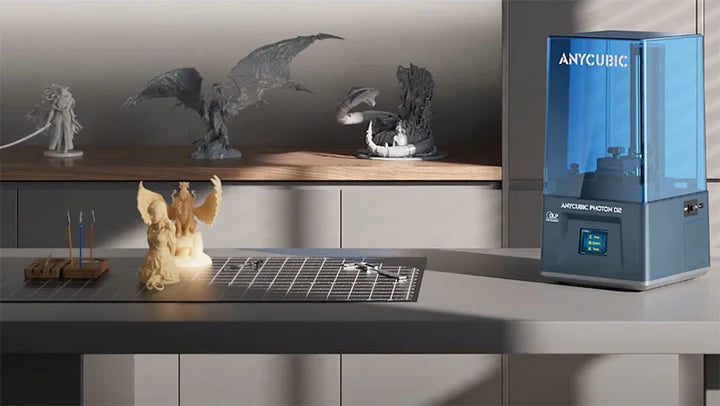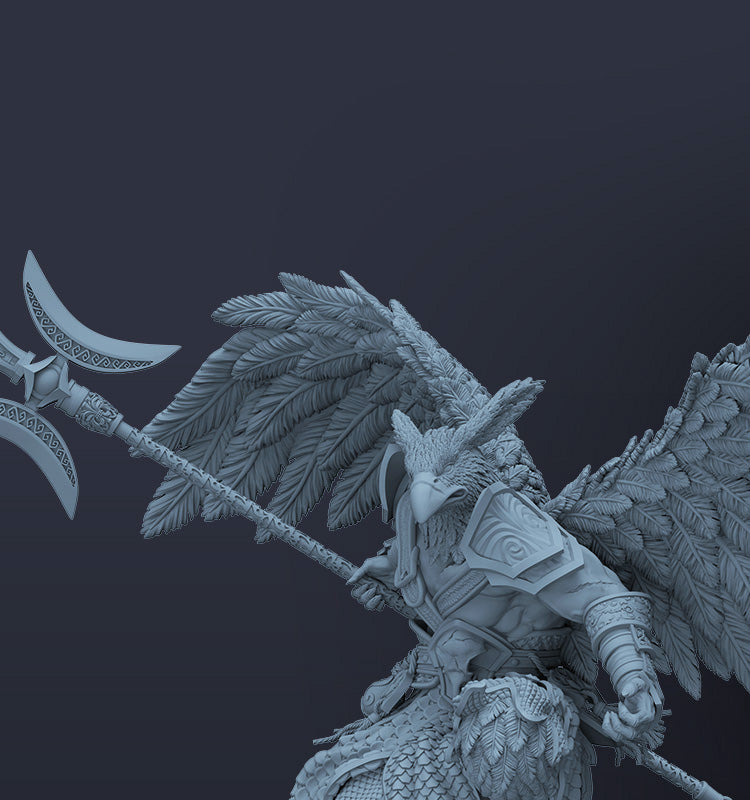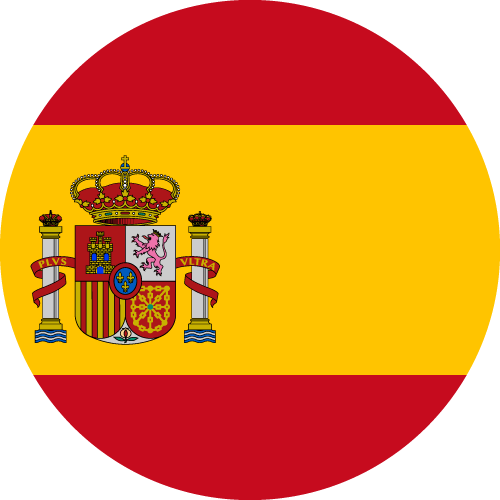The history of 3D printing is not so short, the initial theory can be traced back to the 1950s, and in 1971, there were patent applications related to 3D printing. Now this filed is like a tree full of flowers, there are already a number of mature theories and surprising applications in the industry sector, health and education sector. But for us, the 3D printing hobbyists, the most common ones will also be FDM printers and resin printers. So these consumer-grade desktop printers in the market, which one is the best for you? Let’s take a detailed look at how FDM printers and resin printers compare.

Basic Concepts of FDM and Resin Printers
FDM, known as Fused Deposition Modeling, simply means that materials are stacked layer by layer through melting and extrusion, then a digital 3D model is built out as a solid.
Resin 3D printing is based on light curing, and like FDM, it is a kind of additive manufacturing, resin printing is the conversion of a liquid polymer into a solid shape by light curing. The common ones are: SLA(Stereolithography) Laser 3D printing, LCD(MSLA) 3D printing, and DLP(Digital Light Processing) 3D printing.

How FDM and Resin Printers Work?
FDM 3D printer, which entails inserting the filament into the extruder, heating it at the hot end, and then extruding it from a nozzle in motion, completes the deposition layer by layer, and these layers fuse with each other to form the final 3D model.

Photo source: Obsessively Geek 3D Printing — 3D Printing
Even though there are different types of resin printers, they are built around the same principle, using a light source, laser, or projector, to cure the liquid photosensitive resin. For LCD(MSLA) 3D printers, the screen, build platform, and resin tank, are the more important parts. Layer by layer, the cured resin is attached to the build platform and the model will gradually rise up from the resin tank.

Photo source: Stereolithography SLA 3D Printing -LAVA
Different Materials Used in FDM and Resin Printers
The material used in FDM 3D printers is a filament, it will be heated to a certain temperature where they melt and is used to construct models. But here are a large number of filaments to choose from, the most common being PLA, which is also one of the most popular filaments because of its ease of printing.
Other commonly used products are ABS, PETG, TPE, and Nylon. The temperature that can make them melt is different, and the more important point is that we can use their special characteristics to achieve different effects.

Compared to the filament, the resin is actually relatively fragile but can provide a tremendous increase in accuracy. Usually, the resins used are photosensitive resins, and the printing process is light-cured, mainly for delicate miniature models.
The resin is slightly toxic and has an irritating odor. Choosing a plant-based resin will improve the printing experience and is more environmentally friendly. Others such as Flexible Tough Resin, Water-Wash Resin, ABS-Like Resin, they have different characteristics and can achieve different printing effects.

How to Choose the 3D Printer More Suitable for You?
Once you know more about FDM and resin printers, how to choose which one is better for you? In fact, we have to consider many factors, such as the model you want to print, the application area, the difficulty of using the printer, the budget price, etc. Let's do a set of comparisons.
|
|
FDM Printer |
Resin printer |
|
Desktop Print Volume-Typical |
200 x 200 x 200mm |
145 x 145 x 175mm |
|
Desktop Print Volume-Large |
400 x 400 x 450mm |
300 x 335 x 200mm |
|
Application |
Basic proof-of-concept models |
Miniature models |
|
Print Accuracy |
Medium |
Excellent |
|
Print Smell |
Faint odor |
Pungent odor, ventilation needed |
|
Print noise |
≤ 58 dB |
≤ 58 dB |
|
Print Material |
Filament |
Resin |
|
Surface Finish |
Medium |
Easy |
|
Post processing |
Easy |
Medium |
|
Desktop Price |
$200-$600 |
$300-$1000 |
|
Entry Level Price |
under $200 |
under $200 |
Both types of printers have their own advantages and disadvantages, so the focus is on how to choose according to our needs. Large models, cosplay items, and objects for household, if you are interested in these models, then choose a suitable FDM printer, a few filaments will allow you to realize your work, and create a mask or a vase on a corner of your desktop. Browse this highly recommended 3D printer model site: Thingiverse and try to find your fun.
If you can handle the resin well and have the patience to post-process the finished model, resin printing is actually not troublesome at all and has a higher success rate! Please try the resin 3D printer, when an exquisite model is printed, it is more than enough to give you a great sense of accomplishment. It just requires a more lab-like working environment and a little more patience, there is no doubt that it is fun to experience and become a fan of resin 3D printers. For example, you can make a beautiful decoration for Christmas. Wouldn't it be a great idea and gift to print out a lovely crystal ball using a resin printer? You can also paint and install a light bulb for this adorable gift.
Look at the video guide for DIY a fantastic Christmas crystal ball with Anycubic Photon Mono X.
For post-processing, we would recommend Anycubic Wash & Cure Machine 2.0, equipped with an enclosed washing space and a rotating curing platform, which makes post-processing easier and safer. Washing and curing can also improve the performance of materials.
Best FDM and Resin Printers Recommended
Whether you are a new fan or have been an enthusiast of 3D printing for years, simple and precise automatic leveling will provide us with a better printing experience. Anycubic Kobra Neo, equipped with a one-touch auto-leveling system, is one of the best choices of FDM 3D printers, and it also comes with an integrated extruder for precision filament extrusion, an easy-to-remove PEI spring steel platform.
With its 25x22x22 cm print size and up to 10 cm/sec print speed, Anycubic Kobra Neo meets the needs of FDM printing. It is user-friendly, fully functional, and works efficiently. The sale price of $229.00 on the official website makes this printer stand out in its category. If you have a need for larger-scale model, then Anycubic Kobra Plus is definitely the best large size FDM printer.

For resin printers, the higher resolution allows for larger prints, more detail, and accuracy. An 9.1" 4K Monochrome LCD screen means good print performance, so Anycubic Photon Mono X2 is recommended!
High-performance Z-axis greatly improves the stability of printing, and the new matrix UV light source can achieve higher quality printing, this printer is very stable and also has a fast printing capacity of 60mm/s. After the release of Anycubic Photon Mono X2, it has been recognized and loved by many customers. The price of the sale which is under $400 on the official website also makes it a more cost-effective resin printer.




